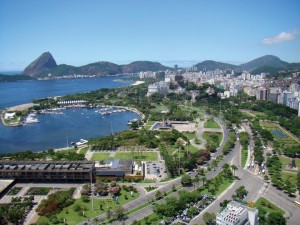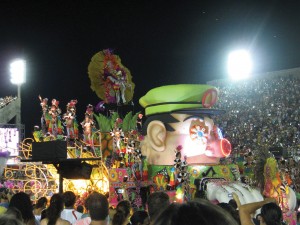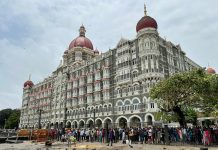 Aparna Sundaresan guides you through Rio de Janeiro, the cultural hotspot of Brazil
Aparna Sundaresan guides you through Rio de Janeiro, the cultural hotspot of Brazil
Nicknamed the Cidade Maravilhosa or Marvellous City, Rio de Janeiro has many distinctions for being named so: it is a World Heritage Site, it is blessed with stunning natural beauty, it plays host to the biggest party of the world and has a rich historical legacy on account of its position as the erstwhile capital of Brazil.
Rio has the honour of being the most visited South American city. Its world famous Carnaval draws huge crowds, as do its beaches, stunning landscapes and geographical marvels, and displays of samba dance and bossa nova music – genres that are unique and native to Brazil. The most recognisable symbol of Rio is the giant statue of Cristo Redentor – Christ the Redeemer – which is now one of the New Seven Wonders of the World.
Come mid-2013 and Rio de Janeiro will play host to some of the biggest international events: first, World Youth Day in July, a major Catholic event for the youth; next, the FIFA World Cup in 2014; and then the Summer Olympics in 2016. With all eyes on Rio, there has never been a better time to make a trip to the city.
Sightseeing Checklist
- Christ the Redeemer statue
- Sugarloaf mountain in a cable car
- Corcovado, meaning ‘hunchback’ in Portuguese, Sugarloaf’s neighbouring mountain
- Maracaña Stadium, one of the world’s biggest football stadiums, and the football museum inside
- The many beaches along the Rio coastline, especially Ipanema and Copacabana
- Jardim Botanico, the botanical garden
- Paço Imperial, Old Imperial Palace
- Candelária Church
- Teatro Municipal, City Theatre, inspired by the Paris Opéra House
- The numerous museums that dot Rio’s landscape
- Witness the Carnaval, a two-week party of parades, samba dancing and general eye-popping displays. Watch samba schools competing with each other in Sambadrome.
- See the New Year fireworks at Copacabana Beach.
- Hang glide from the Pedra Bonita (‘Beautiful Rock’) and land on the Praia do Pepino (‘Cucumber Beach’) in São Conrado.
- Hike up Sugarloaf and Corcovado mountains.
- Learn samba dancing or capoeira, a mix of dance and fighting.
- Attend a bossa nova concert in the downtown district of Lapa.
- Shop at the ‘hippie fair’ in Praça General Osório in the Ipanema neighbourhood on a Sunday.
- Taste the feijoada, Brazil’s most famous dish, a black bean stew filled with big chunks of meat.
- Drink at botequins, simple traditional bars that serve alcohol. They are ample in Rio.
Travel Tips
- Learn basic Portuguese before you travel to converse with the locals, especially the shopkeepers and taxi drivers.
- Rio taxis are a good way to travel around the city. Hire yellow cabs with a blue strip on their sides as they are the legal taxis. Buses are also a great option as they are cheaper and cover more ground quickly owing to dedicated bus lanes.
- Metrô Rio, the underground train system, is a quick, safe and comfortable way to travel from Ipanema to Copacabana and even beyond. Note that the last carriage of the trains is reserved for women in rush hour and the service shuts at midnight.
- Drug lords and slums (called favelas) are located on many of Rio’s mountain slopes, right next to middle-class neighbourhoods, which are hotbeds of crime and violence. Avoid them.
- Dengue fever is prevalent during summer, so carry necessary precautions like insect repellents with you.
- Don’t linger in the streets late at night. Likewise, don’t emerge outside too early in the morning.
- In case of an emergency, the number to call is 190 (like USA’s 911).
Know Where You’re Going
CLIMATE:
Tropical Savanna which resembles the monsoon climate. Heavy rains from December to March; 40+°C summer from November to March.
CITY ALIGNMENT:
East-west, so the harbour looks like it is at the end of a massive river.
LANGUAGE SPOKEN:
Portuguese. A little English, French and Spanish are also understood owing to large numbers of tourists.
BEST TIME TO VISIT:
Summer – witness Christmas, New Year and Carnaval celebrations.
Volume 2 Issue 7
































